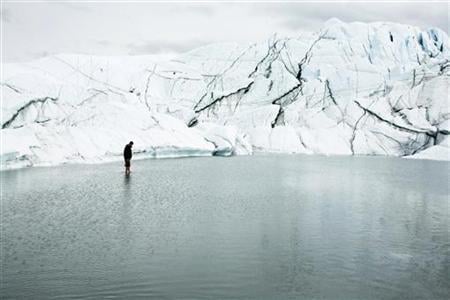
Just like we have had antibiotics for almost a century, bacteria have responded by evolving antibiotic resistance. The battle is endless.
Arctic Ocean will be ice-free by 2040
The question that arises is what will happen if we were suddenly exposed to deadly bacteria and viruses that have been absent for over a thousand years?
This is all because of climate change as it is melting permafrost soils that release ancient viruses and bacteria.
In August 2016, a 12-year-old boy from a remote corner of Siberia died after being infected by anthrax.
Scientists suggest that a reindeer infected by anthrax died and its carcass trapped under a layer of frozen soil which is known as permafrost. But the heat wave in summer 2016 caused the permafrost to thaw which released infectious anthrax. This anthrax was exposed to nearby water, soil and even food supply. Frozen permafrost soil is the perfect place for bacteria to remain alive for as long as a million years. But due to global warming, older permafrost layers are opening a Pandora box of diseases.
Temperatures rising in the Arctic Circle about three times faster than the rest of the world can prove to be harmful in the nearby future.
"Permafrost is a very good preserver of microbes and viruses, because it is cold, there is no oxygen, and it is dark," says evolutionary biologist Jean-Michel Claverie at Aix-Marseille University in France. "Pathogenic viruses that can infect humans or animals might be preserved in old permafrost layers, including some that have caused global epidemics in the past."
The big fear that exists is what else is lurking beneath the frozen soil.
It is highly probable that other infectious agents could be unleashed because people and animals have been buried in permafrost for centuries.
Scientists have discovered the Spanish flu virus in corpses buried in mass graves of Alaska. Bubonic plague and small pox are also buried in Siberia.
This is not the first time that frozen bacteria have come back to life.
In a 2005 study, NASA scientists successfully revived bacteria that had been encased in a frozen pond in Alaska for 32000 years.
Arctic thaw quickening threatens trillion-dollar costs: report
Two years later, scientists managed to revive an eight million-year-old bacterium that had been lying dormant beneath the surface of a glacier in Antarctica.
However, not all bacteria can come back to life after being frozen in permafrost.
We should focus on these threats from climate change as well and not ignore risks just because we cannot quantify them.
This article originally appeared on BBC



1730959638-0/trump-(19)1730959638-0-165x106.webp)













COMMENTS
Comments are moderated and generally will be posted if they are on-topic and not abusive.
For more information, please see our Comments FAQ